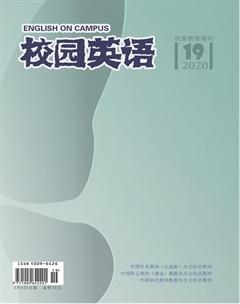The Innovation and Sustainability of “Five-waterCo-Governance” in Ningbo
【Abstract】Water, which is the most important source material basis for the mankind and all living things, has been seriously damaged because of the industrial development in Ningbo. To overcome the difficulties and improve efficiency, Hua Xing Village and Zong Han Street, which is the village in Ningbo, invented their personal new technologies. Nevertheless, the effect of the reform is not conspicuous due to the lack of awareness and incomplete system. A questionnaire and an interview were conducted among villagers and cadres in two villages. Eventually, some suggestions are put forward in the discussion part.The article is mainly to analyze not only the implementation of the new technology in these two villages, but also the comparison of the old and new technologies!
【Key words】Five-water co-governance; rural domestic sewage; governance situation
【作者簡介】何芳霞,宁波财经学院。
1. Introduction
Water, which is the basic natural resources, strategic economic resources and social resources, is the most important material basis for the survival and development of human beings and all living things. However, with the continuous development of the economy, Ningbos water resources have been seriously damaged. The continuous deterioration of the water environment in the river network has seriously affected the peoples quality of life and the process of modernization.[Hu Yang, ZhengXuefang, 2004]In order to promote the controlling of rural domestic sewage, Ningbo has invested a lot of manpower and material resources, but affected by farmers living habits, the concept of government management and other factors, the treatment effect is not ideal. The quality of some rivers is still very low.In this regard, the relevant villages have carried out reforms and innovations. The inventions of new technology, which are aerobic and anaerobic in Huaxing Village, and cultivation of microbial species in Zonghan Street, came out.
2. Processand results
I interviewed two key cadres of the Environment Bureau of the two villages to get some useful data on water quality from cadres. In addition, I also carried out a questionnaire ,which is about the understanding of the five-water co-governanceand their own participationon the villagers of the two villages.
From January to June 2018, the overall quality of surface water in the city was good. Among the 80 municipal control sections, classⅠ-Ⅲ water quality sections accounted for 76.3% and the rate of reaching the standard in water functional was 80%.It is gratifying to know that most of the villagers can actively participate in the ranks of sewage treatment and the cadre said that there are more than 580 households in the village and the total amount of sewage discharged is large. The terminal treatment facility of the domestic sewage treatment project adopts mature and reliable aerobic anaerobic-constructed technology. And the residents' domestic sewage is uniformly collected and incorporated into the centralized treatment system of the sewage treatment system, and the treated water quality index reaches the first class B standard of the National Pollutant discharge Standard for urban sewage treatment plants.Compared with the old technology, the technology has a better cleanup capabilities and less manpower consumption, although it is more expensive and more difficult than the old technology. The microbial strain project in Zonghan Street is organized and implemented by the Provincial Water Conservancy Science. It mainly adopts a variety of dominant environmental microbial populations screened from nature. After directional domestication and cultivation, it is used to degrade pollutants in water. So, the water can restore the self-purification capacity. It is reported that this is still the first application in the province, and it will play an exemplary role in the river regulation throughout the province.
3. Discussion
First,during the visit,we can find that two villages have set up“riverchief”for the related channel.However, since the“riverchief”is not a formal position in the current administrative system, if the “river chief”wants to take measures, it mainly depends on the public resources at its disposal.To a certain extent,the sustainability of the behavior in water controlling is also relatively poor.[YuLiwen, 2018]Moreover, the“riverchief”will not always be concerned about the state of the river and will appear only after receiving a report from villagers. It can be found that the government supervision is not enough. Secondly, public has not established the idea that they are also the main body of water control. Most of the villagers rely on a temporary sense of responsibility, and if this enthusiasm is not assisted byexternal force. Therefore, the villagersparticipation in the control of water can only be temporary and not for a long time. In view of this, I put forward the following suggestions:
(1)Call on the public to participate in the protection of water resources.From the point of water pollution control in the Great Lakes Basin,the full introduction of public participation,so that the public management of water pollution control model will greatly improve the enthusiasm of sewage treatment.This not only needs the government,the media to carry on the massive propaganda,but also needs the villagers to take part in the water control as a slice of their daily life,and carry it out to the end.
(2)Establish some muti-level water resources management systems.From the experience of water pollution controlling in Danube River and other regions.European countries have established the corresponding muti-level water resources management system.Governments at all levels should do practical things and not be illusory officials.
(3)The enterprise takes the initiative to donate and contribute to the work of water control.The use of new technologies requires large fundings,which requires media advocacy and calls for active contributions. Through this investigation and study,we can find that the new technology of the two villages is effective.I hope that the relevant departments can combine the suggestions I put forward to carry out certain reform and innovation, so that the advantages the technology are more obvious!
References:
[1]Yuliwen. Study on“five Waters and Co-governance”from the Perspective of multiple Governance[D]. Northwest University, 2018.
[2]HuYang, ZhengXuefang. Problems and Comprehensive Regulation measures of River Network Water Environment in Ningbo City[J]. Zhejiang Water Conservancy Science and Technology, 2004(05):75-76.
[3]ShenJincheng. Government responsibility in Water Environment Management[D]. Nanchang University, 2017.

